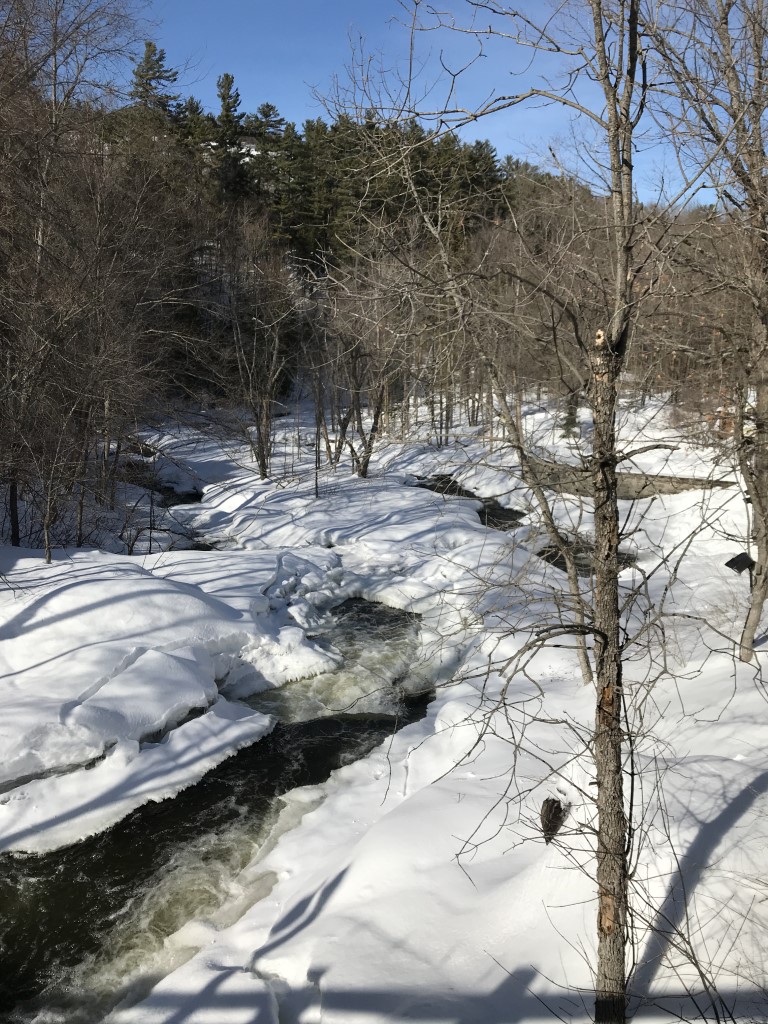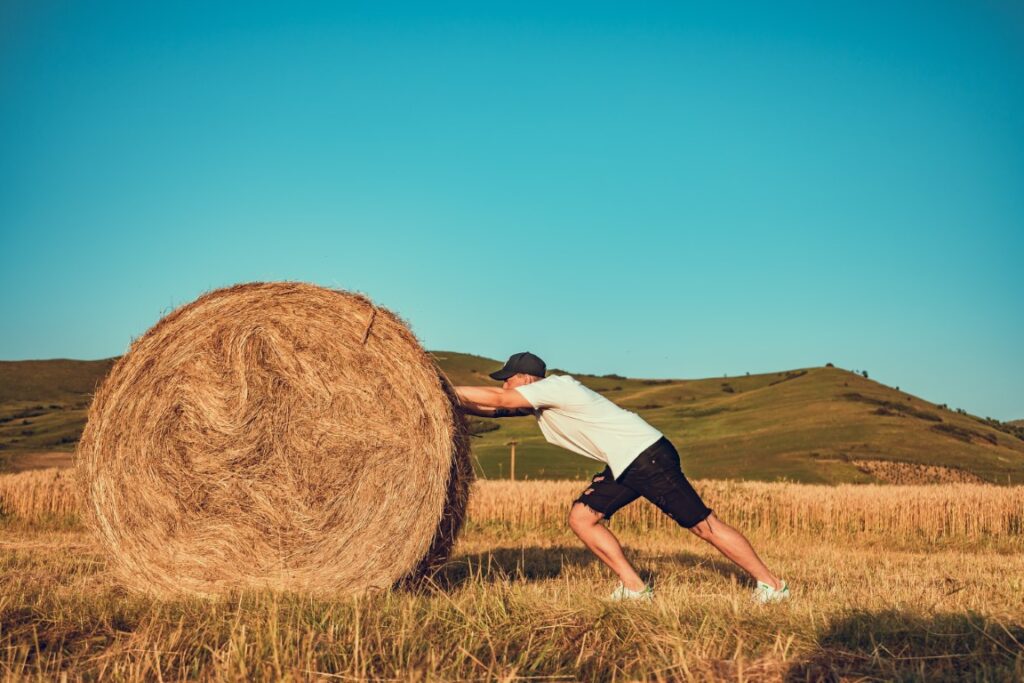- EVOLUTION OF A POEM
- THE CREATIVE PROCESS UNMASKED
- GOOD AND GREAT ARTISTS
- THE CREATIVE PROCESS UNMASKED: Part 4, Rest Time
- THE CREATIVE PROCESS, PART 5: How Confinement Can Expand Creative Expression
- CREATIVE SPARKS
- PERSPECTIVE
- WHEN “I” DOESN’T MEAN “ME”: Lesson #1 From My Latest Poem
- ART FROM REAL LIFE
- ARTIST AS WITNESS
- NOW THAT’S A POEM: Where Inspiration Comes From
Hello there!
Continuing with our celebration of National Poetry Month, I’d like to take you behind the scenes and show you an example of how one particular poet (me!) went about creating a piece of what I call “Poetry Art.”
Step 1: The Photograph

For me, the process usually begins with an image that I’ve captured with my camera. This is the Art part of my Poetry Art. For example, this little river in Wakefield, Quebec, caught my attention last year: rushing so fast it cut a line of movement through the frozen landscape. And I thought, “hmm.”
Step 2: Notes, Research and Scratching Out
I always start writing by hand, usually in pencil, making notes, jotting the phrases and feelings that come to me when I look at the picture, or that caused me to take the picture in the first place. In this case, you’ll see words like rush, tumble, foam, power… all words that I tried out, to find the ones best depicting what I saw and felt about the river. You’ll also see some dates and names as part of the notes. I researched the Mill at Wakefield and found out when the village was established, because I knew I wanted this poem grounded in history. My rough notes are here.
What followed was a lot of scratching out and playing with word placement as I worked towards saying what I wanted to say with this poem. Once the writing starts to flow, I usually switch to the keyboard, since I can type faster than I can write. That’s where I work out the first draft.
Step 3: Critique
I’ve had the great fortune to work closely with two excellent writers for over a decade now. Lynn, Jen and I work hard to help each other be the best writers we can be, and I don’t publish anything (except blog posts) without getting their input first. Here you can see their suggestions for this poem.
Step 4: Editing and Compression

Based on the input from my writers’ group, I then rework the poem. I pay particular attention to removing rather than adding words. Poetry is an art form that conveys much in few words, and I love this challenge! Poetry also evokes emotion and visuals in the reader’s mind through the use of the right words. Poets (me included) spend a lot of time finding the right words. In this poem, for example, I thought hard about the use of realize versus understand, finally settling on realize. This was important, because I wanted to convey there had been an epiphany of sorts on the part of the narrator, as she stood on the bridge at the top of the dam.
Step 5: Photo Edit
Finally, I need to ensure that I’m happy with the composition of the photo that will accompany the poem. I actually took over half a dozen shots from the bridge. I chose the above shot, but cropped it so that the tree forms a kind of border on the right hand side of the frame.
The final version is here. I’d love to know:
- Did anything surprise you about the “poet’s process” I described?
- What do you think about the word choices in this poem? Did you “get” the image of the rushing river? Its history? The “epiphany” at the end?
Please let me know what you thought of this behind the scenes tour of the creation of Poetry Art!
Lee Ann
Dear Lee Ann, thank you for sharing your process and method. I think it speaks volumes how everything begins with a visual and then reading through your thoughts before it becomes a piece to share with the world. I love how you dig deep into the history and lead your readers to a path of discovery.
Thank you, Irina! Lovely to hear from you.
That is a wonderful poem! I so enjoy seeing the water rush and all the work that it can do. I see so many steams and small rivers. Especially in Europe I can see that it has been well used and still in many cases is.
Yes, you are right about the small rivers in Europe. Hopefully we will be able to visit them again soon!
Hi I enjoyed the poem. Beautiful picture.
It was interesting to see behind the scenes, your thought process and your choice of words to convey
how the River presented to you.
Looking forward to your next piece.
thanks, Teresa! Glad you enjoyed the photo and the poem I had fun writing about the process I follow to create!
Well! I was there for part of this process and I still learned a lot and found this fascinating. This might surprise you, but I often think of poetry as being sprung from some sort of well of inspiration – like a torrent of the perfect words just flooding out of nowhere.
I was surprised at how much of a deliberate process it was – not just word choice, but the thought behind the theme and what you want to say. And I was especially surprised to see research involved!
I think it only lends weight to the whole creation process to know that such care was taken. I love the finished result!
I had many comments similar to this, Lynn (both here on the site and via email or conversation). There does seem to be a mystique about poetry, that it is some magical process that happens outside of craft. In my experience, and hearing other poets and master poets talk about their process… there’s as much work in writing a good poem as there is in writing any piece of prose. Revision, revision, revision, at the line and word level to say something just right. And yes, sometimes research too! I think where the magic lies is in the original inspiration, same as for any piece of art. After that, for a poet, who has much less room to play in than a novelist, it’s the work of shaping the words.